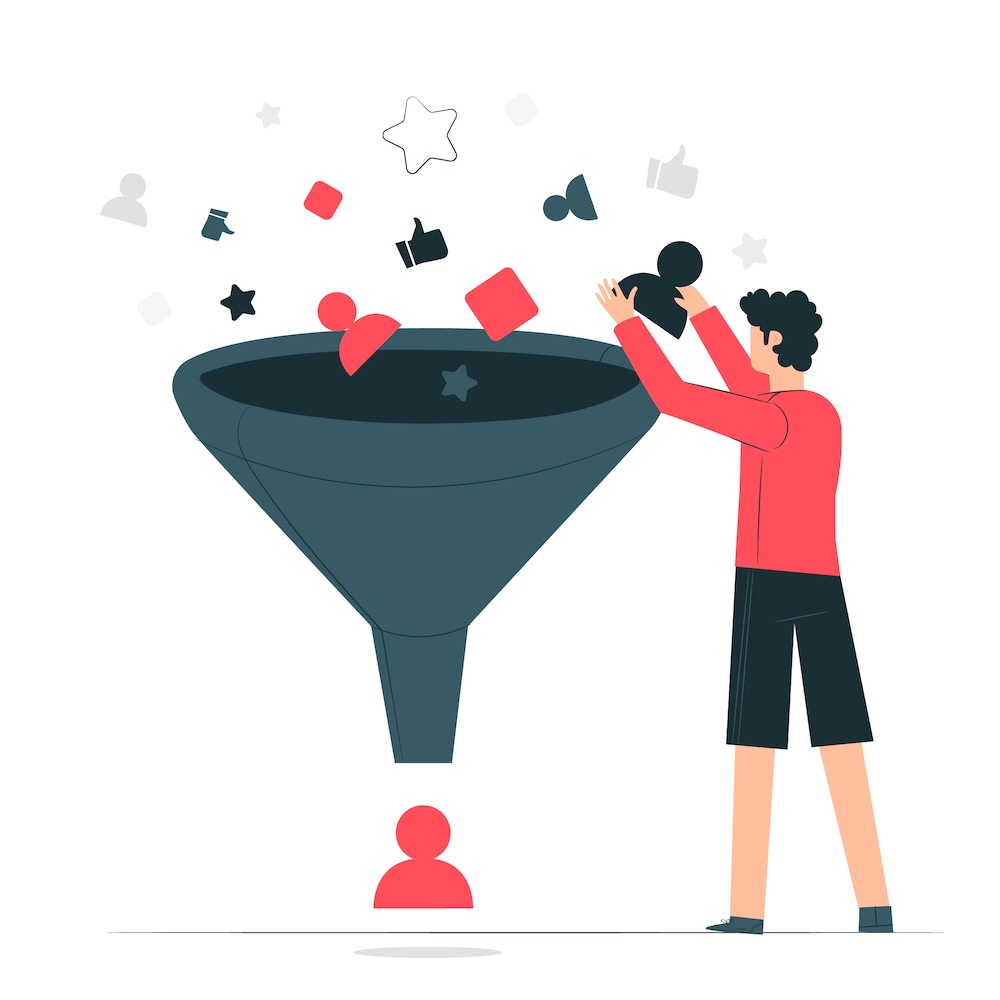
Lead nurturing is an essential aspect of the world of sales. At its most basic, it involves building relationships with potential customers throughout various stages of their buying journey, and ensuring they’re informed and engaged every step of the way. When you drill down further, however, you quickly realize that there’s an almost endless amount of depth to be explored on the topic.
It’s not enough to take a cookie-cutter, one-size-fits-all approach. Different kinds of leads need to be nurtured in different ways, depending on variables like customer persona, industry, and level of intent. But even within the same persona, no two prospects are quite the same, so it’s important that the sales reps in your team are flexible enough to adapt and adjust their process depending on the demands of the situation at hand.
Lead Nurturing: A Plethora Of Approaches
It goes even further than that when you get into the nitty-gritty details of what nurturing a lead actually looks like. With so many different approaches flooding the internet, we’ve decided to put together a list of five key strategies that can be employed in order to nurture leads effectively through the sales pipeline and toward the finish line of a conversion.
In the following article, we’ll be discussing email campaigns, educational content, omnichannel engagement, dynamic/personalized content, and account-based marketing (ABM).
While all of these approaches are different, there are plenty of common threads running through them. As such, it should be possible to take what you consider the most valuable insights from each suggestion and craft your own personal lead nurturing strategy, tailored for your organization’s unique needs.
One of the most important broad concepts to get a handle on is the concept of continuous optimization, improving your processes as you gather more data to increase the chances of future conversions. noCRM offers a powerful suite of historical statistics analysis features to help you do just that. By taking a deep dive into all the information you’ve already collected, you’ll be perfectly placed to improve your lead nurturing strategies on an ongoing basis. You can learn more about those statistics features here.
And now let’s get straight into the list.
1. Personalized Email Campaigns
Personalized email campaigns are far and away one of the most effective ways to nurture leads through your pipeline, ensuring they feel heard and engaged with at every stage. The benefit of this strategy is immediately clear when you consider its counterpart, i.e. blasting out generic emails to your entire lead list. Not only are those messages likely to be unsuccessful at building a relationship, they also have a nasty habit of ending up in spam folders, or even being outright ignored by their recipients.

By contrast, personalized emails that change depending on the lead’s behavior, preferences, and stage in the buying cycle stand a dramatically increased chance of engaging the target, which should always be the main focus. In a world where every individual has countless companies vying for space in their email inbox, keeping people emotionally invested in your brand isn’t just a nice bonus: it’s a matter of survival.
Here are a few tips for making the most out of your personalized email campaigns.
Segmentation and Targeting
Without segmentation, you can’t have personalization. That probably goes without saying, but you’d be surprised by how often even seasoned sales professionals can overlook the most basic of concepts. Segmentation, in the context of lead nurturing, involves breaking your lead into various groups based on certain criteria.
These could be demographics, past interactions, purchase history, or even specific interests — it all depends on your particular business and its customers. The number of groups you choose to segment will vary as well, but general good practice is to start broad and get increasingly narrow as you A/B test your campaigns and figure out what’s working and what isn’t.
Dynamic Content
Once you’ve segmented your list, you’re going to want to tailor the content in your emails for each group. There are several different ways to do this, but one of the most effective is to use dynamic content.
We’ll be touching on dynamic content in more detail further down in the article, but for now, it’s enough to say that dynamic content allows you to create a more engaging and relevant experience for your segments, based on what they’ve already shown interest in.
For example, if a particular segment has demonstrated interest in a certain service, feeding them more content highlighting that service can only boost your chances of an eventual conversion.
Automated Drip Campaigns
Drip campaigns that send out a series of emails over a period of time are an excellent way to automate your email outreach efforts and scale up your lead nurturing process. Typically triggered by specific actions taken by the lead — such as downloading a white paper or signing up for a webinar — automated campaigns help maintain consistent communication with your potential customers.
Drip campaigns also allow your leads to make their way through your sales funnel at a pace that feels right for them, striking the balance between being neither too pushy nor too low-energy.
2. Educational Content
Think about the last time you overheard a conversation between co-workers in the break room. You probably don’t remember the random story somebody told — but chances are you can recall the interesting fact somebody shared.

The basic psychological principle underpinning that phenomenon is the fact that humans instinctively react more positively toward learning. It’s part of our nature, after all. And if you’re part of a modern sales team, you can exploit that aspect of our psychology in order to nurture your leads more effectively.
Providing educational content is a great way to add value to your customer’s day. You’re not just informing them about something they didn’t know before. You’re simultaneously building a positive association with your business, establishing your organization as a group that shares useful information, often without being too pushy.
Value-Driven Communication
Nobody likes being sold to, but everybody likes learning new things. As such, leads are more likely to engage with your brand if they perceive that you’re offering value, rather than just trying to sell them something. In addition to boosting the chances of engagement, sharing value-driven, educational content helps to build trust and position your company as an authority in your industry.
For this to work, of course, the content you’re sharing has to be genuinely insightful — but that’s a topic for another day! For now, we’d just like to reiterate how important it is to think in terms of offering value rather than closing deals at the early stages of a sales funnel.
Content Types
When it comes to the actual nuts-and-bolts details of sharing educational content, the world is basically your oyster. You can go the traditional route, with blog posts, whitepapers, and other forms of text-based media. A punchier option, albeit one with a higher production cost, is to send out educational videos.
Infographics are excellent for immediately grabbing somebody’s attention and communicating an interesting point clearly and concisely, while lead magnets, like eBooks or webinars, can be a great way to drive more of an action from your leads and get them to invest more in their relationship with your business.
3. Omnichannel Engagement
Long gone are the times when you could engage via a single channel and clock out for the day. These days, omnichannel engagement is the name of the game, and for good reason. With so many competitors out there, all fighting for the limited attention spans of the same potential audience, you simply can’t afford to drop the ball.

If you’re focusing purely on emails, for example, but your biggest competitor is also getting in touch with that same lead via social media and retargeting ads — well, who do you think they’re going to pay more attention to?
Omnichannel engagement is more of an investment in terms of resources, but the long-term ROI of successfully implementing such a strategy more than makes up for the initial outlay. Here are a few guidelines for effectively employing omnichannel engagement throughout the lead nurturing process.
Diversify Your Channels
You can’t engage across multiple channels if you’re only using one. Relying on a single channel doesn’t just reduce your reach — it seriously limits your ability to engage with your leads.
The first step of developing any engagement strategy has to be diversifying the channels you’re using, taking time to figure out where you want to be reaching out to your potential customers and how you’re going to customize content across each channel. The more touch points you can use effectively, the higher your chances of conversion are going to be.
Social Media Engagement
Social media platforms are powerful tools for lead nurturing. It’s absolutely crucial that you regularly post engaging content on platforms like LinkedIn, Twitter, Facebook, and Instagram to keep your audience informed and interested. We’ve all seen the graveyard social media accounts of businesses who simply stopped updating their profiles over the years — don’t make the same mistake.
There’s another huge benefit to engaging via social media channels, as well: its versatility. Depending on the platform, you can share educational content, company updates, customer success stories, infographics, videos, lead magnets, and even recent tidbits of industry news. The only limit is your imagination.
Retargeting Campaigns
Retargeting campaigns are designed to re-engage with leads who previously interacted with your website or content, but didn’t ultimately convert. Research shows these leads stand a great chance of ultimately making a purchase, so it’s a mistake not to go after them again.
By showing high-value ads to this specific segment across various platforms (such as social media, search engines, and even other websites) you can keep your business fresh in their minds and continue to build on a solid foundation.
Don’t make the mistake of being too intense with the retargeting ads, though. The best tone to strike is one of a gentle nudge, politely reminding the lead that your business exists and encouraging them to revisit your site and continue their journey.
4. Content Personalization and Dynamic Content
Content personalization and dynamic content is an effective alternative for approaching lead nurturing. Crafting a broader strategy around providing personalized content experiences will ensure that each lead receives information that’s specifically relevant to their needs and interests, helping to reinforce the connection they’re building with your business and make them feel heard.
But in order to make the most of these techniques, it’s important to have a handle on a few core concepts.

Behavioral Analysis
Behavioral analysis tools are vital for tracking how leads interact with your website and content. The number of metrics you can monitor are endless, but some of the heavy-hitters to focus on include page visits, time spent on pages, downloads, and click-through rates.
noCRM offers integrations with a number of different marketing tools that can be used to make this process more streamlined, such as Leadinfo, which identifies companies that visit your website, or Sabarcane’s suite of marketing features. You can check out the full list of marketing suites that integrate with noCRM here.
Customized Content Recommendations
Content recommendation engines are a vital inclusion for your website and in your email content. By analyzing a lead’s previous interactions, these tools will suggest relevant articles, videos, or products that can keep your leads engaged and demonstrate you understand their needs and are committed to providing valuable resources.
Adaptive Content
Adaptive content goes beyond static personalization. It involves creating content that can be adjusted based on various inputs, such as user location, time of day, device type, and previous interactions. This level of customization ensures that your content is always relevant and engaging, no matter how or when leads interact with it.
5. Account-Based Marketing (ABM)
Account-Based Marketing (ABM) is a highly targeted lead nurturing strategy that focuses on engaging specific high-value accounts, rather than trying to go after a broad audience.
Although quite specialized, this approach allows you to tailor your marketing efforts to the unique needs and pain points of each account, increasing the likelihood of conversion.
Account Segmentation
The first step is to identify and segment your high-value accounts. This process, which can be labor-intensive but is ultimately rewarding, involves researching potential accounts that align with your ideal customer profile and have a high likelihood of becoming profitable customers. Segment these accounts based on key criteria such as industry, company size, and specific business needs.
Multi-Touchpoint Engagement
In order to effectively nurture your high-value target accounts, you’ll need to engage with them through multiple touchpoints — the more, the merrier. Email and social media are great ways to engage from a distance. Once you’ve built up a bit of interest, however, it’s always a good idea to get more personal with direct calls. noCRM can help you do just that by integrating with VoIP software, dramatically streamlining the process of reaching out over the phone.
Because all the interaction takes place within the CRM itself, your data is automatically synced from each call, allowing your reps to engage at scale without worrying about losing sight of any crucial details. Here’s some more information on why noCRM is the perfect CRM for VoIP integration.
No matter what method you ultimately employ, putting an effective lead nurturing strategy will pay dividends for your business’s long-term growth. The key, as is always the case in the world of sales, is to use data to your advantage as much as you possibly can. Whether it’s via personalized campaigns, hyper-specific segmenting, high-value ABM efforts or continuously improving your drip campaigns, keeping all your data organized and analyzing it as much as you can, will be a game-changer for your sales engine.


